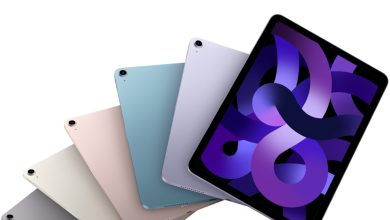Video Editing: The Basics of Video Conversion

Video converters are software that converts files from one format to another. This can be useful if you want to share a file with friends, upload it to social media, or back up your data. It’s also useful for archiving: converting your old VHS tapes into digital files will allow you to store them in more convenient places.
You’ll find lots of different video converters on the market; some are free and some cost money, but they all work basically the same way:
- You feed them a video file (usually in .MP4 or .AVI format) and tell them what kind of file you want to be outputted (iMovie accepts .MOV files).
- The converter processes this input and spits out an output file at whatever quality level you specified (1080p HD vs 360p SD).
How Do I Convert Videos?
Converting videos can be a tricky process. It’s not as simple as just plugging in your device and hitting the “convert” button. There are a few different factors that you’ll need to consider before you can get started converting your video files.
You can use a video converter software to do the job. There are many different kinds of software available on the market, but some of the most popular ones include Wondershare Free Video Converter and AVCWare Video Converter. These programs will allow you to convert your videos into any format that is supported by your device.
You can also use online services such as YouTube’s own online converter (which allows you to upload a video and then download it in another format), or other websites that offer similar services. These services are generally free, but they may have restrictions on how many times you can use them within a certain period of time or how much data they allow per day before imposing limits on what you can do with their service during that time period.
Finally, if you want more control over how your videos are converted—as well as other features such as adding subtitles or creating custom chapters for each section of your movie—you should consider purchasing an app that allows you to perform these tasks without having any restrictions imposed upon them by third-party entities such as YouTube’s own converter service
How Can I Compress Videos?
You can compress a video to make it take up less space and bandwidth on your computer, phone, tablet, or TV.
- Reduce File Size: When you convert a video to M4A format, you can reduce the file size by shrinking the resolution from HD to SD. For example, if you have a music video that’s 720p (1280×720) in size and want to send it over email, then converting it down to 480p (640×480) will save some space. If you’re going through slow internet speeds, this will also help with buffering issues.
- Save Space on Your Device: If your device doesn’t have much storage left or is running low on memory due to photos and videos taking up too much room; then compressing them into smaller formats may help free up some space for other things like apps or games.
Can Videos Be Converted Into Audio Files?
Yes, you can convert audio files into video files. You just need a good video converter that is able to process and convert your audio file into a format that can be played on your device or computer.
In fact, many people do this all the time. For example, if you have a video of your child playing with their favorite toys and you want to send the video to your parents, it might be easier to just convert the video into an audio file and send that instead. This way, your parents don’t have to wait for the entire video to download before they can start watching it.
Another reason you may want to convert a video into an audio file is if you’re using a phone or tablet that doesn’t support playing videos on its small screen. In this case, converting the video into an audio file will allow you to hear it through headphones or speakers instead of having to watch it on your device’s screen.
What Types of Video Formats Are There?
There are many, many different video formats. To name a few: MP4 (.mp4), MOV (.mov), and AVI (.avi). These are just some of the more common ones you’ll encounter.
The format you choose depends on what it’s going to be used for, as well as your computer’s hardware and software capabilities. If you’ve got a Macbook Pro laptop with an Intel Core processor, for example, then your computer is most likely capable of running .mov files natively; however, if your laptop has an ARM-based processor from Nvidia or Qualcomm instead then .mp4 might be the better option since they’re more compatible with that type of hardware.
What Are Codecs and Why Do They Matter?
A codec is a digital representation of an audio or video file that allows you to encode, decode, compress and decompress them. You can think of it as the “language” your computer uses to understand how sound and video are translated into ones and zeroes.
Most people think about codecs only when playing back their favorite movie or TV show on their phone using Netflix or Hulu, but they’re also essential for converting video files from one format to another (like from .mp4 to .avi) so you can watch them on different devices. Because not all formats are supported by every device—and because some devices don’t support certain formats at all—it helps if you have the right type of video file for your device in hand before starting the conversion process.
What Is a Container Format and Why Is It Necessary?
A container format is a file structure that stores audiovisual content. The most common types of containers are AVI, MP4, FLV, and MKV; these are often used to store videos on the internet.
They’re necessary because they store metadata about your video files. This includes things like resolution and quality settings (for instance: 720p HD or 1080p HD), audio channel information, subtitles, and closed captions.
Converting and compressing videos is easier than you think.
Converting and compressing videos is easier than you think. If you’re using a Mac, you can download Handbrake through the App Store. If you’re using a PC, there are plenty of free online converters that will do the job. For example, Online-Convert is one of my favorites because it’s quick and easy to use—just enter your video URL and press “Convert.” You can also use a paid converter like VidCoder if you’d prefer something with more features or options to customize.
Once your video has been converted into MP4 format, it’ll need to be compressed for viewing on most devices (like smartphones). This step does not require a dedicated program; any basic video player will do the trick! We recommend VLC Player as an all-purpose option that plays just about any format under the sun—and even offers some basic editing tools if needed!
Finale
Video conversion is a process that can be intimidating, but it doesn’t need to be! With the right tools and knowledge, you can convert any video format into one that works for your needs. Whether you want to compress files so they take up less space or create videos out of existing footage, there are many different ways to do these things quickly and easily.




